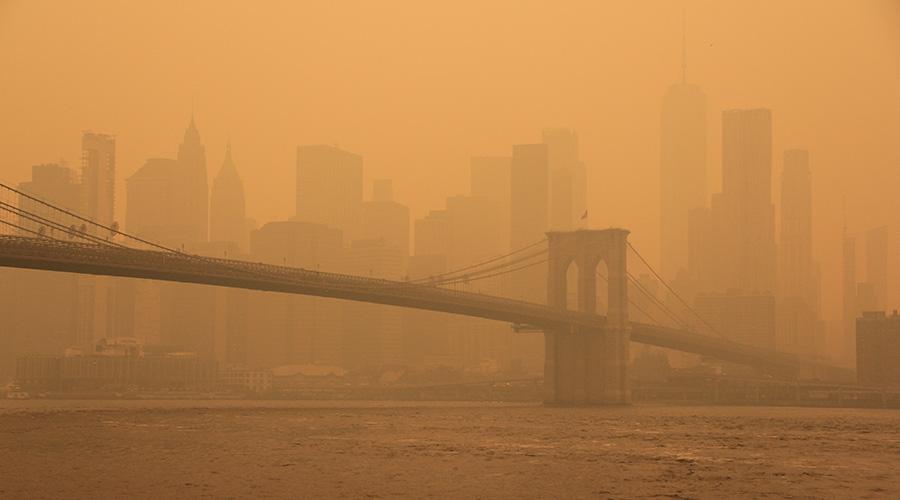Steps on the Path to Sustainability
Green certification programs and rating systems give managers tools to minimize facilities' impact on the environment
By Chris Matt, Associate Editor
Before specifying products and services, managers have always had to consider life-cycle costs, maintainability, and reliability. But now, more than ever, they also have to weigh the impact the product and its application can have on an organization’s environmental footprint.
“Green has a lot of tentacles, but the big three areas to achieve include social responsibility, preservation of natural resources through sustainable practices, and protection of human health,” says Dr. Marilyn Black, founder of Greenguard Environmental Institute, an ANSI-authorized standards developer that establishes indoor air standards for products, environments, and buildings.
Evaluating green products and implementing best practices to promote environmental friendliness have added a great deal of responsibility for managers in charge of facilities’ day-to-day maintenance operations. Fortunately, many organizations offer programs that test and certify green products and guide managers through the process of improving organizations’ environmental friendliness.
Seal of Approval
Green Seal has been developing standards and certifying green products for almost 20 years, and the organization’s Greening Your Government program has helped various agencies and municipalities make their purchasing, operations, and facilities more environmentally friendly. About a month ago, the organization expanded its services with the launch of two partnership programs – Green Facilities Partnership and Green Purchasing Partnership. The partnerships are based on the service Green Seal has been providing through the Greening Your Government program, but they go one step further by providing recognition for organizations making strides toward environmental responsibility.
“The partnerships are based on an action plan each organization would develop, and we monitor it annually,” says Mark Rentschler, Green Seal’s director of instituting greening programs.
The partnerships have replaced two standards — Green Facilities O&M Criteria GS 39 and Green Procurement Criteria GS 38. Green Seal created those standards in the early 2000s to certify organizations for becoming green purchasers or implementing green operations and maintenance practices, but the standards allowed no flexibility, Rentschler says. Both partnerships are in the pilot phase, which is expected to last 12-18 months.
The Green Facilities Partnership is not a standard-based certification program, but Green Seal designed it to complement established programs, specifically the U.S. Green Building Council’s (USGBC) Leadership in Energy and Environmental Design (LEED) rating system. The Green Facilities Partnership provides recognition based on instituting a plan unique to each organization’s challenges and opportunities.
“The partnership approach allows for greater difference in starting point and recognition starts earlier,” Rentschler says.
The Green Facilities Partnership provides three recognition phases. Green Facilities Partner is entry level, Green Facilities Leader is advanced and Green Facilities Champion is the highest level of achievement. Each level has a different set of criteria a facility needs to meet to receive recognition. For example, the Green Facilities Partner level has six distinct steps for a maintenance and engineering department to follow:
•The applicant provides Green Seal with current operations and maintenance data and current facilities management policies, procedures, organizations, and staffing.
•The organization develops a Green Facilities Action Plan that contains facility-specific deadlines and benchmarks.
•If the organization meets its plan criteria, it becomes a Green Facilities Partner and receives various forms of recognition.
•The organization provides Green Seal with quarterly progress updates.
•Green Seal annually reviews the organization’s progress in implementing the action plan.
•Finally, Green Seal determines whether or not the organization will remain in the partnership program based on the proper implementation of the action plan.
Because the Green Facilities Partnership does coincide with LEED, organizations vying for Green Seal’s recognition will be keeping an eye on LEED and any changes that take place. The latest revision came in January 2008, when the USGBC unveiled its new LEED for Existing Buildings rating system called LEED-EB: Operations & Maintenance (O&M).
LEED Revisions
When the USGBC revised its LEED-EB Version 2.0 rating system and created LEED-EB: O&M, it directly affected maintenance and engineering managers and their departments. The O&M system features: streamlined reporting; fewer prerequisites; greater focus on operations and maintenance; ease of use in greening large portfolios of existing buildings; and more rewards for measured environmental performance.
“We wanted to focus on what makes a building green throughout its life cycle,” says Doug Gatlin, USGBC’s vice president of market development.
The USGBC cut the number of prerequisites from 13 in Version 2.0 to nine in O&M, Gatlin says. The organization eliminated some prerequisites and credits because the material was related to new construction, which has its own rating system, he says. When comparing O&M to Version 2.0, certain elements exist that make the new system more logical and easier to understand.
“O&M is really for facility managers, property managers and real estate professionals who oversee that building as an asset,” Gatlin says.
The credits are organized thematically, and the USGBC broke up the materials section into more logical groupings – consumable goods, durable goods, and facilities alterations and additions, for example – that made sense for business functions within a system. O&M also simplified the language, eliminating the bureaucratic feel, Gatlin says.
“In the previous version, it was more centered around technical specifications of achieving the standard, but first-time readers would go into it and see technical language,” Gatlin says.
O&M also features expanded sections on energy and water efficiency. O&M offers 50 percent more points for energy efficiency and new credits for energy best practices, including auditing, existing building commissioning, and ongoing commissioning. The water-efficiency section features double the amount of points and includes new credits for water metering and cooling-tower efficiency.
“Those are two areas where you’ll see a direct financial benefit from resource conservation itself,” Gatlin says.
Organizations still can register their projects under Version 2.0, but the USGBC encourages projects to become certified under LEED-EB: O&M. The revised system requires buildings to be operating for at least 12 continuous months before applying for certification.
Guarding IAQ
While LEED certification pertains to various building components and systems, the Greenguard Environmental Institute has focused its attention on indoor air quality (IAQ). The institute offers three third-party certification programs: Greenguard Indoor Air Quality Certified; Greenguard for Children & Schools; and Greenguard for Building Construction.
Greenguard Indoor Air Quality Certified is a program that targets low-emitting building materials and furnishings. The performance-based standards certify various types of products, including cleaning and maintenance products and systems, flooring, electronic equipment, doors, and office furniture.
“The standards are established on sound scientific/health principles and reviewed by expert panels,” Black says. “Greenguard is also stringent, requiring manufacturers to demonstrate their IAQ performance through testing and to provide verification on an ongoing basis. Basically, manufacturers have to prove their claims. This is not a paperwork exercise. More than 30 percent of those applying for Greenguard cannot make the standard initially. Usually, they have to make changes to their formulations or manufacturing process to reach low-emitting status.”
The institute focused on K-12 schools with its Greenguard for Children & Schools program because children are more sensitive and susceptible to environmental exposures, Black says. They breathe in more pollutants in proportion to body size than adults, and their biological systems are developing and growing, she says.
“Protecting our children from unnecessary environmental exposure is essential with asthma and learning disabilities on the rise,” Black says.
Greenguard for Building Construction certifies the design, construction and ongoing operations of newly constructed commercial properties. It promotes best practices for combating mold and ensuring healthy IAQ. The program focuses on the design of a building through the occupancy stage, which directly relates to maintenance and engineering departments and their role in establishing healthy indoor air.
The operations section of the program requires five basic elements:
•Documentation requires managers to develop a written plan. The plan is a central reference tool for building employees.
•Training ensures ongoing competency of technicians in recognizing and responding to moisture issues effectively.
•The Responsibilities element provides accountability for implementing the plan and ensures moisture issues are resolved in a competent and timely manner.
•The Communications element ensures moisture issues are routed to appropriate staff quickly. A well-designed communications strategy empowers all building occupants to report moisture issues to the right staff person.
•Monitoring provides a formal mechanism by which building conditions are assessed and reported.
“The combination of these five key elements will greatly increase the likelihood of preventing major moisture issues in an operating building.” Black says. “But, at a minimum, (they) will ensure that any moisture problem is recognized and resolved as quickly as possible.”
The process of managing moisture and preventing mold spans the building’s life cycle, Black says. That process is why it was important for the institute to include an operations section as part of the Greenguard for Building Construction program.
“Implementing moisture and mold management practices during the design and construction of a building provide a great foundation for the long-term quality of the structure and protection of occupants,” Black says. “However, the operation of building systems, the aging of the building structure and materials, as well as the activities of occupants, can contribute to moisture problems once the building is operational and occupied. A well-designed and implemented operations and maintenance plan is the final, critical piece of an effective moisture-management program.”
Green Seal, Greenguard and the USGBC all have programs to help organizations reduce their environmental footprint. But the three organizations also have programs specifically related to operations and maintenance. As managers know too well, a building’s impact on the environment does not stop once the design and construction stages are complete. Managers can use these programs to better understand their role in making facilities more sustainable.
Related Topics:











